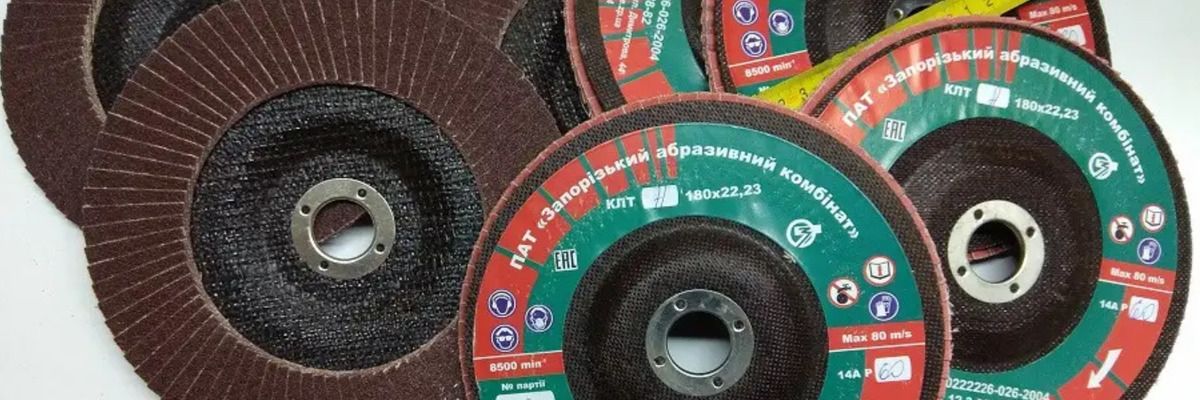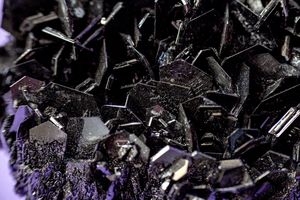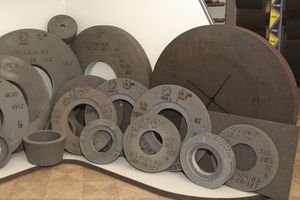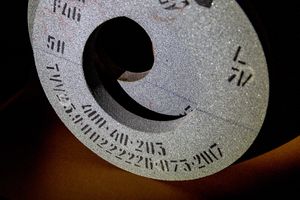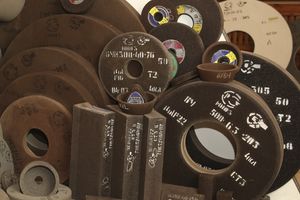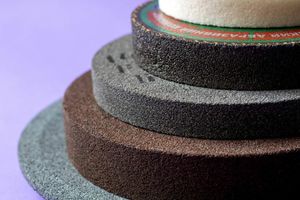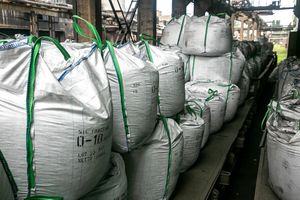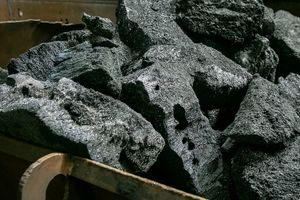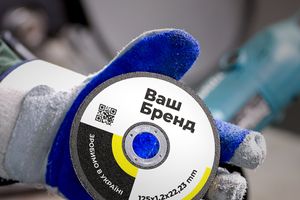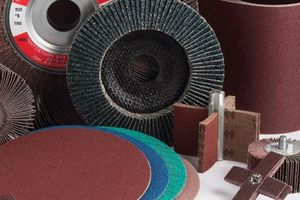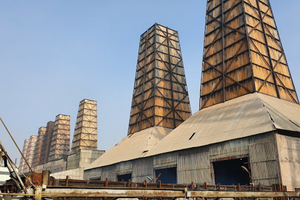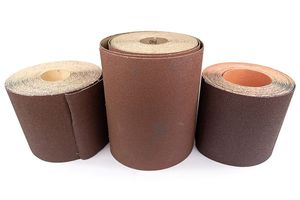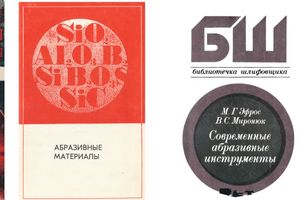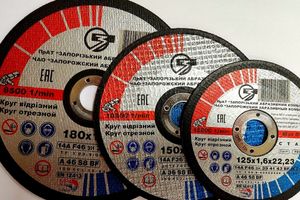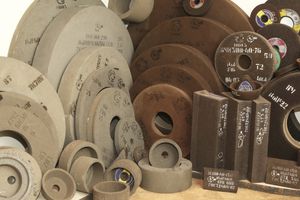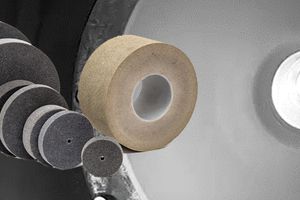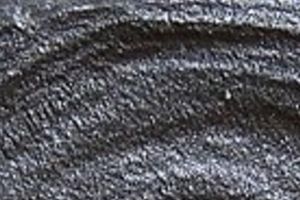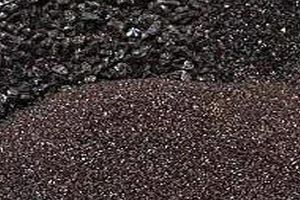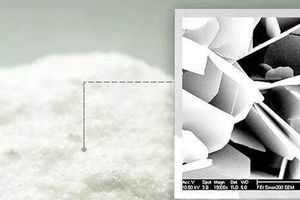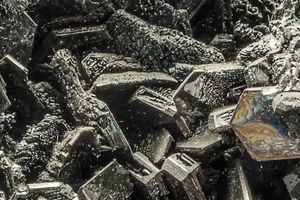Like all sanding attachments, the sanding petal wheel is a flat disc with an abrasive surface. It includes a disk head and a grinding part.
However, there is also a design feature that distinguishes a petal disk from a regular one. Thanks to this unique structure, you will immediately recognize the petal wheel among other grinding attachments. This feature is many segments. They are arranged radially, like fans. There are so many of these segments that they partially overlap each other, causing a persistent association with the petals of an unusual flower. Hence the exotic name - petal disk.
Petals-segments are a strong material on which abrasive elements are located. Abrasive grains, depending on their size and location, can perform different functions: scraping, cleaning, grinding or polishing.
Such a structure is very carefully thought out. Segments-petals greatly reduce the level of vibration of the tool during grinding. In addition, they adhere to the parts very tightly. Therefore, grinding is very gentle and at the same time powerful, as it copes with the hardest metal surfaces.
Due to the petal structure, the grinding nozzle is indispensable if you need to grind or clean a part with a complex geometry. A flap disc produces even better results than belt sanders because the abrasive belt does not adhere to the surface as thoroughly as the flaps do.
Where petal circles are used
The unique structure of the petal wheel gives two significant advantages over other grinding attachments:
- Optimal adhesion to the surface being polished;
- Excellent grinding result on the hardest materials.
Due to such features, the field of application of petal grinding wheels is very wide. Petal sandpaper is used for polishing, cleaning and grinding the most complex parts, and the list of acceptable materials is very wide. These are all metal surfaces (both ferrous and non-ferrous metals, as well as steel, including alloyed), and wooden products, and stone, and marble, and glass, and concrete, and plastic.
Flap wheels for grinding surfaces are most widely used for:
- Final grinding of surfaces. At the final stage of detail processing, there is a need to eliminate small defects, and this should be done gently and very carefully. Radial discs are best suited for such tasks. With it, irregularities and roughness are easily removed. Very often, with the help of petal sandpaper, irregularities from welding seams on metal products, burrs after laser cutting are removed.
- Grinding and stripping of wood. When painting old wooden surfaces, nothing will remove old paint or varnish better than a petal sanding attachment. She works very carefully, managing to remove the remains of paint and varnish, while leaving the wood itself undamaged.
- Cleaning of corrosion and scale. In the garage, at the service station, rust on the bottom or body is removed using a sandblasting gun. However, a petal grinding wheel will cope with this task no worse.
- Cleaning the edges of parts. The edge is best shaped by a special chamfer remover, but after that the best thing to use is a petal grinding wheel. I recommend doing end cleaning with a petal circle, if the workpiece has a thickness of no more than 6 mm along the edge. The petal nozzle has also proven itself well when cleaning curved edges with complex geometry.
Markings on the label: what they mean
Markings are made to indicate all operating indicators of the petal circle. There are marks on the label that indicate:
- The size of the circle is the outer and inner diameter.
- The maximum number of revolutions.
- Type of abrasive – aluminum oxide (corundum), silicon carbide.
- Size of abrasive grains, grain size (marked by the letter P - from 36 to 320). The higher the grain size, the smaller the size of the abrasive itself.
- Configuration – flat or conical.
Marking allows you to choose the most suitable petal disc for your tasks.
Recommendations for choosing a petal circle
Petal sanding discs have high elasticity and give excellent results in sanding, scraping and polishing. They are suitable for materials of different hardness and density, effectively grind ferrous and non-ferrous metals, wood, stone, plastic, glass. The petal design provides much less heating than conventional sanding nozzles. Taking this into account, it is possible to avoid burns, scratches, and surface scale during grinding. And such disks work much more quietly than ordinary ones.
Due to these advantages, the petal circle is very popular. When buying it, you should pay attention to the following criteria:
- Size (outer diameter and mounting hole). It must correspond to the parameters of the device for which you select the disk (for a drill, a drill press, a grinding machine).
- Shape - flat or conical. The configuration should be chosen depending on what kind of workpieces you will grind - large and flat or curved, angular and small.
- The sizes of the petals and grains of the abrasive, as well as the material from which they are made. This will make it possible to choose the right wheel for different materials and for different tasks - polishing, scraping, stripping, grinding.
- Permissible number of revolutions. It is indicated in the marking on the disk. Like the outer and inner diameters, the maximum number of revolutions should also correspond to the tool with which the nozzle will work. That is, by following the rules for choosing discs for a Bulgarian, you take care of your own safety.
Our industry produces the following main types of petal circles:
Radial with a hole (sockets), straight profile of the KSHL type.

They are widely used in industry for performing grinding operations that do not require dimensional stability, for cleaning and polishing workpieces. They are made with a diameter from 100 to 400 mm and are mainly installed on stationary equipment. In special machines for processing knife and fork products, sets of petal wheels are used in the form of shafts for grinding and polishing blanks on the plane.
Grinding and polishing of the outer and inner surfaces of stainless steel and aluminum dishes is performed on special machines to obtain matte or shiny surfaces.
Cylindrical grinding machines allow the use of KL for "longitudinal" external grinding of cylindrical and conical surfaces of workpieces, the length of which exceeds the height of the circle (shafts, rods, sleeves, etc.) and "inset" external grinding for cylindrical, conical, stepped and profiled surfaces of crankshafts, flanges, axes, trunnions, ball fingers, etc.).
On the universal centerless grinding machine, it is most effective to polish cylindrical, conical and profiled surfaces in conditions of mass and large-scale production.
Petal end circles of the KLT type
The most common and most often used type of petal circles. Disc-shaped petal grinding wheels of type A and are made with a diameter of 115; 125 and 180 mm with a maximum working speed of 80 m/s for cleaning and grinding operations of steels, non-ferrous metals and alloys, plastics, wood and other materials using angle grinders (bulgers). They are made of a special grinding wheel using normal electrocorundum and zirconium electrocorundum with grain size P36-P120.
Substrates (bases) used in the manufacture of these circles are made of fiberglass or plastic.
They are used, unlike other types of petal wheels, exclusively on manual angle grinders with a working speed of up to 80m/sec.
Petal end rings are also used for removing rust, scale, preparing surfaces for welding, cleaning welds, removing burrs and grinding surfaces. They work evenly, stably, without burning, leaving the processed surfaces cold, provide maximum removal of material compared to other circles, are safe to use
Petal circles on the basis of a three-dimensional grinding cloth:
Petal and end rings made of the so-called "scotch-bright" (volumetric non-woven fabric filled with abrasive powder) appeared relatively recently and are indispensable for the following sharpening and polishing operations:
- - For polishing kitchen sinks, cutlery, stainless steel dishes, brass musical instruments, turbine blades, etc.
- On special flat grinding and sharpening machines for polishing flat surfaces.
- On special flat grinding and sharpening machines for polishing flat surfaces.ng parts of sanitary ware, handles of door locks, other shaped parts made of metal, wood, stone.
- On manual pneumatic and electric grinders for polishing large-sized parts and metal structures, matting paint, maintenance of public equipment (elevator panels, escalators, etc.).
Some useful tips
- If the disk is not needed for specific tasks, it is always better to choose a universal one. So that it can be used for different metals, roughing and finishing work. Although, of course, it is better to choose different petal discs for different materials. We also recommend polishing and roughing with different wheels, especially since the choice of them is very wide, and there is a best wheel for every grinding task.
- If the purpose of the petal nozzle does not correspond to its application, it will quickly become unusable. And it will not give an effective result. But it should be remembered that even with proper use, the wheel wears out, both the abrasive and the material of the petals are scrapped. Therefore, you should monitor their condition, inspect the disc before work. This way you can protect yourself from emergency situations: disk or tool breakage, flying debris, etc.
- It is also important to use protective equipment - a mask (so that small grinding particles do not enter the respiratory tract), protective glasses and gloves. And another safety rule is good ventilation if you work indoors.
